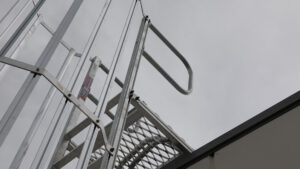Falls from heights are a major workplace hazard resulting in fatalities and injuries across a broad range of industries. Despite this, the risks associated with working at heights are often misunderstood or downplayed.
Many people assume that the majority of significant workplace injuries occur when workers are performing tasks at extreme height, such as from the top of a tall building or a scaffold platform. However according to Safe Work Australia, in the eight years between 2003 and 2011, half of the workplace falls that resulted in a fatality involved distances of three metres or less.
Fall hazards can be found wherever any work is carried out at any height, for example stacking shelves or unloading a large truck. Falls can also occur at ground level down into holes, trenches or service pits.
There are a range of nationally accredited courses available that cater for workers and employers in various roles and different levels of experience and skill sets. that work at heights.
One of these courses is the RIIWHS204D Work Safely at Heights course. This is a comprehensive introductory course designed to educate workers on how to effectively eliminate and control the risks associated with workplace falls and also utilise personal fall protection systems or equipment.
In this blog post, we take an in-depth look at the legislative requirements regarding this course, what the course covers, as well as the benefits of completing it.
What are the relevant workplace regulations regarding working at heights?
According to the Work Health and Safety Regulation 2011 (Cth), employers must provide specific control measures when there is a possibility of a fall occurring from one level to another that is reasonably likely to cause injury or death.
For example – if a worker is working 4 metres away from an edge and the furthest they could fall down is 600mm, and it is likely they could sustain a significant injury if they fell this distance, they need to have completed sufficient working at heights training, such as RIIWHS204D Work Safely at Heights.
Whilst completion of RIIWHS204D Work Safely at Heights is not listed as a specific requirement under the Act, this nationally accredited course does meet the requirements needed for complying with the Act, and should form part of your safety plan.
If working at heights above three (3) metres in housing construction or two (2) metres in any other construction setting, employers are legally required to provide all employees with a fall protection system. It is also the responsibility of the employer to ensure that employees are properly trained on how to correctly use the fall protection system. This training is covered in RIIWHS204D Work Safely at Heights.
When would completion of the RIIWHS204D Work Safely at Heights course be required for the use of a step ladder in a workplace?
Employers always hold the responsibility of ensuring the safety of their employees, regardless of the height an employee needs to perform a task at. In the event of an accident, employers may need to demonstrate the safety procedures and training they have in place.
The training must include the correct selection of access equipment and PPE required to perform the access and work safely.
In the case of using a step ladder in an environment, like an office, competition of RIIWHS204D Work Safely at Heights may not be deemed necessary. Instead, an employer would usually be required to complete a Safe Work Method Statement that outlines specific risks that may be encountered whilst working on a step ladder in the subject environment, and also provide adequate instruction in the method of work required to perform the task safely.
What does the RIIWHS204D Work Safely at Heights Course cover?
Here’s a brief overview of what students will learn in the course:
- Understanding of height safety legislation and standards
- How to perform risk assessments and control measures
- How to recognise suspension trauma
- Pre and post use inspection of all personal fall protection equipment
- How to identify, select and correctly fit a fall arrest harness
- Demonstrate fall restraint, work positioning and fall arrest techniques
- Safe use of tools and materials
- Loads on roof surfaces
- Installing temporary roof safety systems
- Pre-use anchor point selection and inspection
- Correct rigging of anchorage slings
- Use of self-retracting lifelines
Benefits of completing the RIIWHS204D Work Safely at Heights Course
For employees:
- You will learn vital skills required to protect yourself, and your co-workers, against the dangers associated with working at heights.
- You will increase your skill set which will make you more eligible for certain jobs and projects.
For employers:
- Your employees will be able to perform a wider range of jobs and tasks
- Your employees will be able to perform their work fast and more efficiently as they will be more confident in the use of their fall protection equipment.
- Having your employees trained and ready to go will allow you to expand your services into new areas and quickly mobilise your team to take on those contracts that previously seemed out of reach.
- You will have taken demonstrable steps to protect the health and safety of your employees which will help avoid any potential workplace accidents and resulting claims or investigations.
Interested in enrolling in the RIIWHS204D Work Safely at Heights Course? Talk to the team at HSE
Whether you’re an employee or an employer, we’d be happy to answer any questions you have about this course.
There are many different height safety courses available from many different training providers, however not all of these courses are nationally recognised. The course we offer is nationally accredited, so you can be confident that the learning outcomes are of the highest quality and meet established standards.





